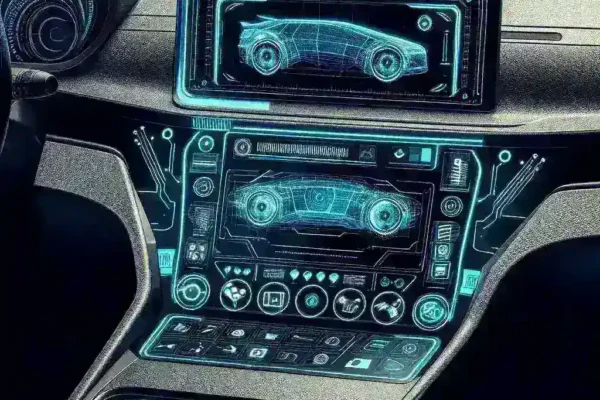Welcome to the future of navigation and travel, where the concept of Instanavigation is set to transform our daily lives. In a world where technology is advancing at an unprecedented rate, the need for efficient, reliable, and user-friendly navigation systems has never been more critical. This article delves into the world of Instanavigation, exploring its core principles, the technology behind it, and its potential impact on various aspects of our lives.
What is Instanavigation?
Instanavigation is a cutting-edge navigation technology that combines real-time data, artificial intelligence, and advanced algorithms to provide instantaneous and highly accurate navigation services. Unlike traditional GPS systems, which can sometimes lag or provide outdated information, Instanavigation ensures that users receive the most up-to-date and relevant directions, making travel more efficient and stress-free.
The Technology Behind Instanavigation
At the heart of Instanavigation is a sophisticated blend of technologies that work together to deliver seamless navigation experiences. Here are some of the key components:
1. Real-Time Data Collection
Instanavigation leverages a vast network of sensors, cameras, and other data sources to gather real-time information about traffic conditions, road closures, weather, and more. This data is constantly updated and analyzed to provide the most accurate and timely navigation instructions.
2. Artificial Intelligence (AI)
AI plays a crucial role in Instanavigation by processing and interpreting the vast amounts of data collected in real-time. Machine learning algorithms are used to predict traffic patterns, suggest the best routes, and even anticipate potential delays or issues. This ensures that users receive the most optimal navigation advice, tailored to their specific needs and preferences.
3. Advanced Algorithms
Instanavigation employs advanced algorithms to optimize route planning and navigation. These algorithms take into account a wide range of factors, including distance, traffic conditions, road types, and user preferences, to provide the most efficient and personalized navigation experience.
4. Cloud Computing
The power of cloud computing is harnessed to process and deliver real-time navigation data. This ensures that users can access Instanavigation services from virtually any device, anywhere in the world, with minimal latency and maximum reliability.
Benefits of Instanavigation
The benefits of Instanavigation are numerous and far-reaching. Here are some of the key advantages:
1. Enhanced Efficiency
With Instanavigation, travel becomes more efficient and time-saving. Real-time data and advanced algorithms ensure that users are always on the optimal route, reducing travel time and minimizing delays.
2. Improved Safety
Instanavigation enhances safety by providing users with up-to-date information about road conditions, weather, and potential hazards. This helps drivers make informed decisions and avoid dangerous situations, leading to safer travel.
3. Personalized Experiences
One of the standout features of Instanavigation is its ability to provide personalized navigation experiences. Users can set preferences for factors such as preferred routes, driving styles, and even specific points of interest, making travel more enjoyable and tailored to individual needs.
4. Environmental Impact
By optimizing routes and reducing travel time, Instanavigation can help reduce fuel consumption and carbon emissions. This contributes to a more sustainable and environmentally friendly approach to transportation.
5. Accessibility
Instanavigation is designed to be accessible to a wide range of users, including those with disabilities. Features such as voice commands, tactile feedback, and customizable interfaces ensure that everyone can benefit from this technology.
Challenges and Considerations
While Instanavigation offers many benefits, there are also challenges and considerations that need to be addressed:
1. Data Privacy and Security
With the collection and processing of vast amounts of data, concerns about data privacy and security are paramount. Developers and service providers must implement robust security measures to protect user data and ensure that it is used ethically and responsibly.
2. Infrastructure Requirements
Instanavigation relies on a robust infrastructure of sensors, data sources, and cloud computing resources. Building and maintaining this infrastructure can be costly and complex, especially in areas with limited technological resources.
3. User Adoption
For Instanavigation to be successful, it needs to be widely adopted by users. This requires effective marketing, user education, and the development of intuitive and user-friendly interfaces that make the technology accessible to everyone.
4. Regulatory Compliance
As with any new technology, Instanavigation must comply with various regulatory standards and guidelines. This includes ensuring that the technology is safe, reliable, and does not pose any risks to users or the public.
Future Prospects of Instanavigation
The future of Instanavigation is bright, with numerous possibilities and potential applications. Here are some of the exciting developments to look forward to:
1. Integration with Smart Cities
Instanavigation is poised to play a significant role in the development of smart cities. By integrating with other smart city technologies, such as traffic management systems and public transportation networks, Instanavigation can help create more efficient and sustainable urban environments.
2. Autonomous Vehicles
As the adoption of autonomous vehicles continues to grow, Instanavigation will become an essential component of these vehicles. By providing real-time navigation data and advanced route planning, Instanavigation will help ensure that autonomous vehicles operate safely and efficiently.
3. Augmented Reality (AR) and Virtual Reality (VR)
Instanavigation has the potential to be integrated with AR and VR technologies, creating immersive and interactive navigation experiences. Users could, for example, see real-time directions overlaid on their view of the world, making navigation more intuitive and engaging.
4. Global Expansion
While Instanavigation is already available in many parts of the world, there is significant potential for global expansion. As the technology continues to evolve and improve, it is likely to become more widely adopted in regions with varying technological and infrastructure capabilities.
Conclusion
Instanavigation represents a significant leap forward in the world of navigation and travel. By combining real-time data, artificial intelligence, and advanced algorithms, Instanavigation offers a highly efficient, safe, and personalized navigation experience. While there are challenges to overcome, the potential benefits and future applications of this technology are immense. As we move into an increasingly connected and technologically advanced future, Instanavigation is poised to play a crucial role in shaping the way we travel and navigate.
Whether you are a daily commuter, a long-distance traveler, or simply someone who values efficiency and safety, Instanavigation is a technology worth exploring. Embrace the future of navigation and discover how Instanavigation can transform your travel experiences.



